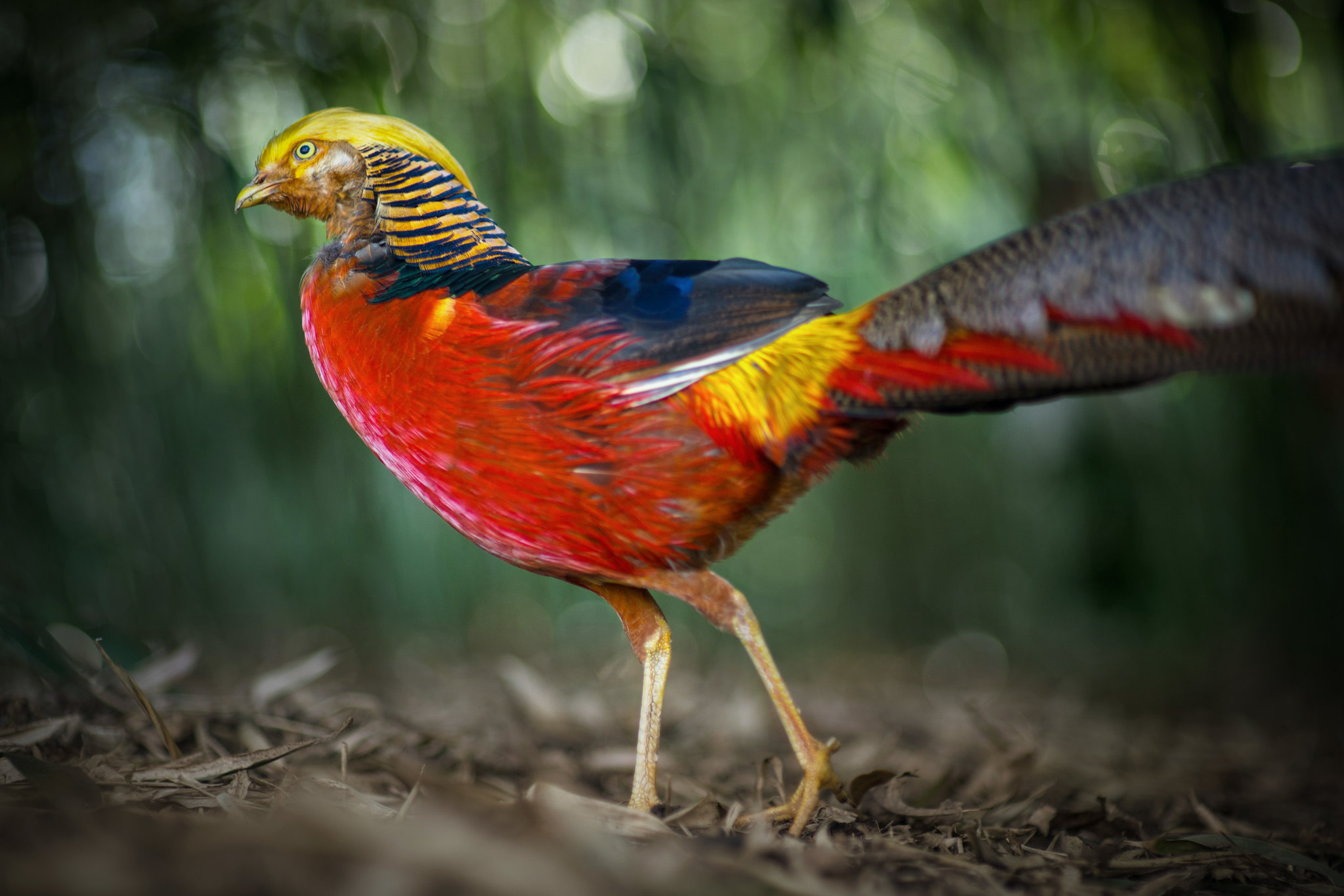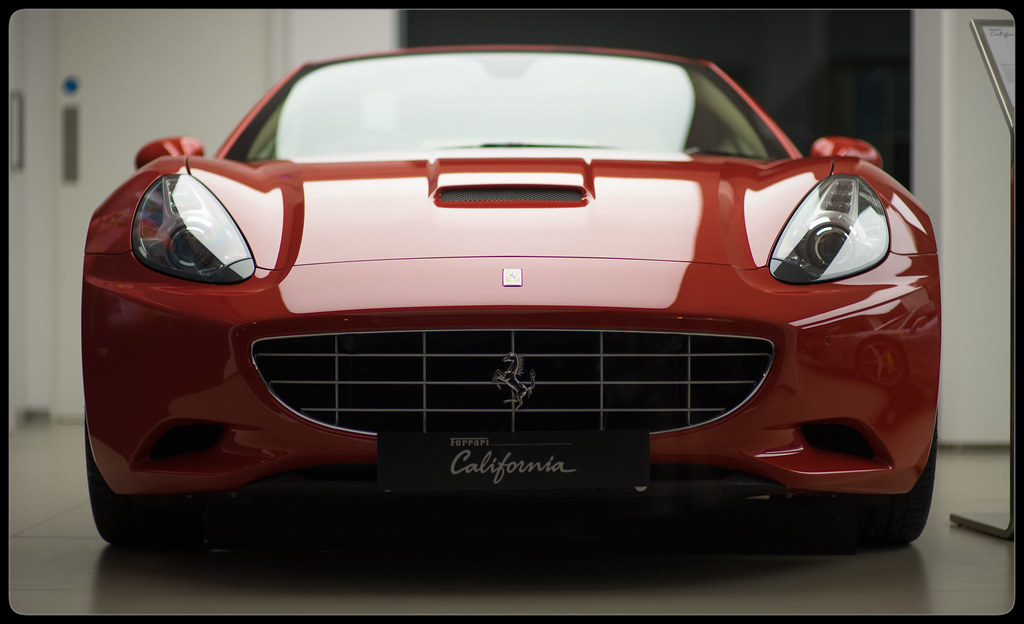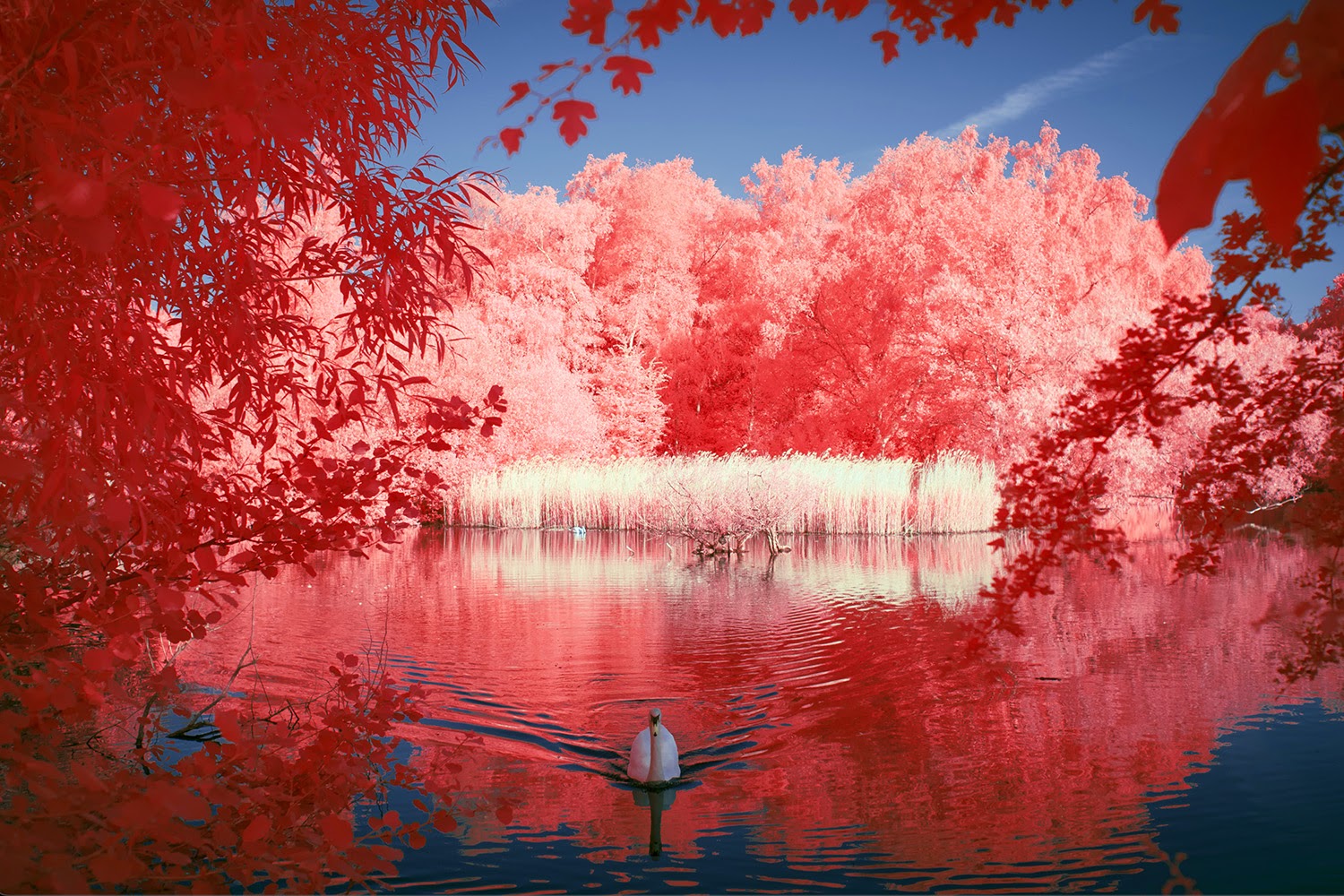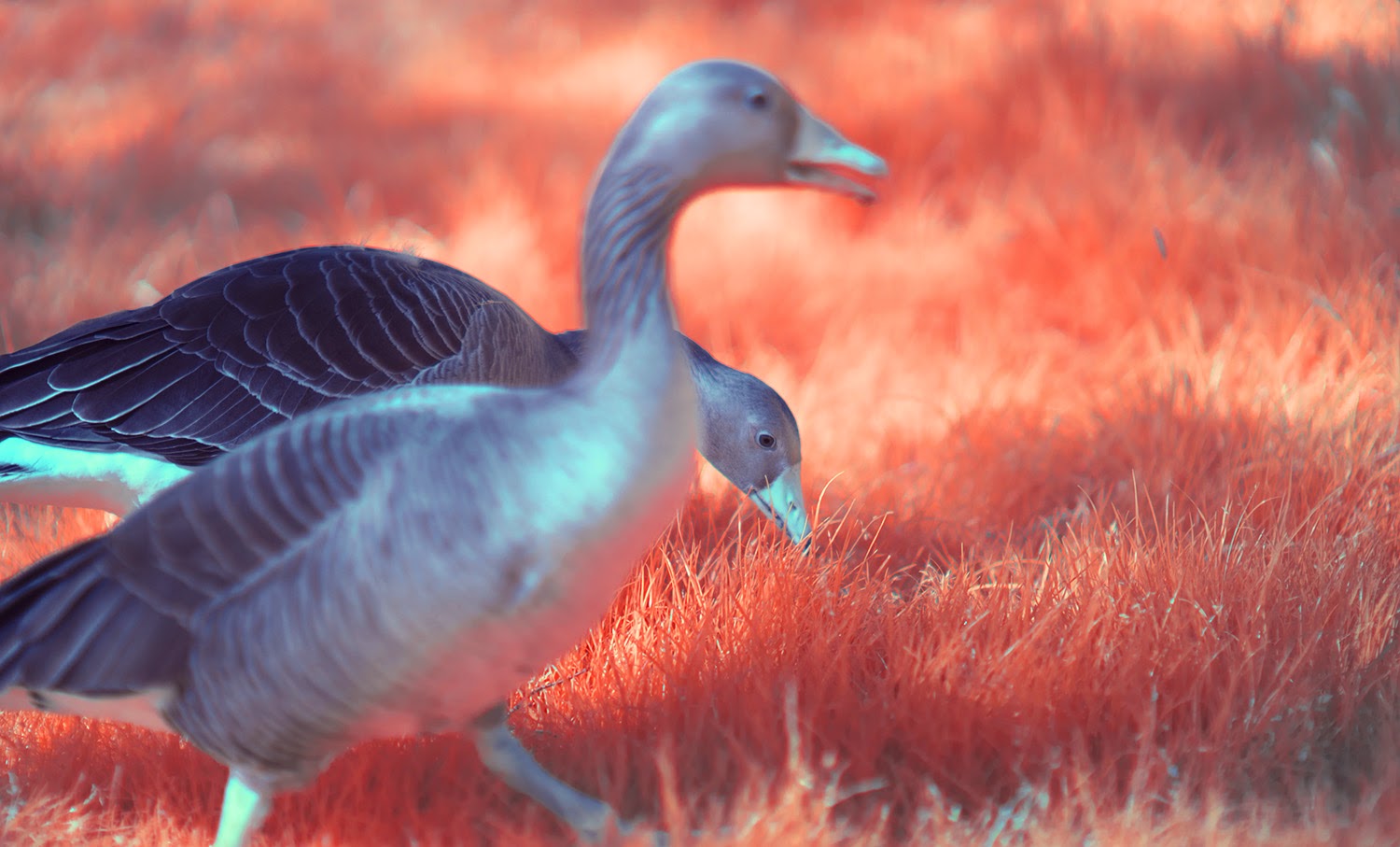Best & Worst
What I absolutely love about this camera is it's potential for experimentation. The conversion opens up a lot of colour processing potential, but the easily adaptable Sony FE mount has been equally brilliant as well. Pretty much any 35mm format lens works on this camera in full frame and without any corrective optics. This means cheap, reliable adapters that allow huge catalogues of great legacy lenses to be used and for relatively little money. Of course you're stuck mostly with manual focus, but the two focus aids (zoom and peaking) make this a surprisingly friendly experience.
Personally, I can't say enough good things about the A7 system's legacy lens support. However, if you're looking for reasonably priced, compact and fast autofocus lenses then it could be one of the worst choices around. To date I still don't have any native (AF) Sony lenses*. This is partly because they're expensive, but they're also not very fast. For the price of the Zeiss 55mm f/1.8 I've managed to buy most of the lenses you see in the photo above. These are extremely fast by comparison (for their respective focal lengths). That said, I do acknowledged that the Zeiss lens's performance is very impressive. I can see myself buying a Sony lens at some point in the near future, I'm just in no major rush.
* UPDATE: I have now bought my first Sony AF lens, in the form of the 28mm f/2. This small, light and relatively cheap lens is great and will no doubt lead me into the rest of Sony and Zeiss' range later down the line. I hope to do a review on this soon. Spoiler: So far every E mount lens I've tried has had issues with infra-red and caused undesirable hotspots, but more on that soon.
Alternative AF
If you're interested in using Canon EF lenses in autofocus on the A7 then I can say it works pretty well. Aperture, Exif and focusing all works, but there are a few caveats to that:
Firstly the focusing is slow, like really slow and in low light it will just hunt... slowly. Secondly no AF adapter works with every Canon lens, so check their supported lens list if you're going to get one. Thirdly- and I guess this could be a money saving tip - don't think that the insanely expensive 'Metabones' adapter does anything better than one of the cheap ones, it doesn't. So I wouldn't consider this as a proper alternative to a Sony lens, but it can do in a pinch. All that said, I am still very impressed by this thing. It communicates the lens info well with the body and it even gets all of it's power from the body, not even the Sony adapter does that (although I know why). Combined with the small and cheap Canon pancake 40mm lens it's a pretty nice size and weight. This lens is generally very good and has almost no IR hotspot issues. The focusing is also really quiet because of the STM motor.
Filters
Native lens and AF adapter issues aside, the remaining troublesome aspects of the the A7 as a full spectrum camera are related to filters. You'll probably want a lot and especially if you have a lot of legacy glass. Step-up rings will get you so far, but you probably won't enjoy using them. I have about 40 filters and still want more. However, with what I know now I could make do with a much smaller number. If I were to start over I would plan for this by keeping the number of different filter sizes I'd need to a minimum. This could be done by carefully selecting a single general purpose zoom or a small collection of primes with the same filter size. For example the following Nikon AI-S lenses all use the 52mm filter size:
24mm f/2
35mm f/2
50mm f/1.2
85mm f/2
Then I would make do with only the following three filters:
- Hot Mirror (this is not the same as a UV/IR cut filter**) - for normal colour photography
- 850nm (B+W 093) - for high contrast b&w infra-red photography
- Red (basic red, or Hoya 25A, this is about 600nm) - for colour infra-red photography
If I'm honest these 3 filters are all I really need. If I had known this a year ago I could have saved a bunch of money. The Red filter can be picked up for very little money, it's even easy to find second hand, often for next to nothing. The other two, although normally much more expensive, will be worth their weight in gold for a full spectrum camera. So if you just spent all your money converting an A7 this basic principle could be just what you need.
** When it comes to shooting normal colour on a full spectrum camera, I didn't do my research. I assumed that a UV/IR cut (or 'blocking') filter would put the colours back to factory default. Many poor purchases and several months later I finally realized this was incorrect. What I needed was a proper 'hot mirror' filter. These work by absorbing invisible light, rather than reflecting it, which makes a huge difference in capturing realistic colours. UV/IR cut filters have a strong red cast which varies across the frame and is impossible to completely correct for in post (there's just not enough play in the white balance of the RAW colour range). Here's a comparison to show you better what I mean:
With the hot mirror filter found and colour issues sorted, full spectrum is a very versatile animal, but there is one more down side to using external filters. Even the best quality filters can't deal with light hitting them in the same way that a lens's front optic can. Any shot you take where the sun or artificial light hits the filter will have an additional flare. If this is likely to bother you (and it does me) then it will make you prey for a simple infra-red conversion, but there's light on the horizon for legacy lens users. DEO Infinity has invented an adapter (called the 'OWL'), that fits 52mm filters behind the lens.
Although the Owl will fix a few image quality issues, it unfortunately bring a few other problems to the table. Firstly it's not as cheap as a normal adapter, although this is only really annoying because you'll need one for each of your legacy lens mounts - again. Secondly, by changing the filter you introduce an extra way to get dust on your camera's sensor. On the flip side - changing lenses (for the same mount) will actually reduce dust exposure. 52mm filters are reasonably priced and you might find you already have a bunch (like me with 14 of the buggers). More impressively you can also use these cheap little filters on super wide-angles or fisheye lenses that can't normally take filters at all. My favourite feature for full spectrum is that if you get a few spare filter holders then changing your spectrum can be a much quicker process. I have ordered an OWL adapter, but I'm not too sure when it will be released. Watch this space though, I will write an in-depth review when it arrives...
An electronic viewfinder (EVF) is an absolute marvel for shooting invisible spectrums, like infra-red. Here are some of the features that I like about using it:
- The viewfinder doesn't shrink when using crop lenses
- The possibility of light leaking through the viewfinder is eliminated
- You can't blind yourself when looking into the sun
And here are the ones that I've grown to absolutelt love (especially for IR):
- Super-imposed horizon level, histogram and focus peaking
- Colours / tones of the spectrum you're shooting in can be seen while shooting
- Correct exposure can be seen, no more horrendous mistakes
- Corrected white balance can be seen
- True focus can be viewed and zoomed in on, no more IR offset worries
Coming from an SLR the EVF was a bit of a shock, but I soon go used to it. There are only a couple of down sides to it realistically and they're not that bad.
- Not being bale to see anything while the camera is off
- The EVF takes more battery power
- Display FPS can slow down in low light, although not a huge issue with fast glass
Pre Conversion
I kept the A7 for a week before sending it away for conversion. This gave me the chance to see if everything was OK and also take some shots for later comparison. Here are some random samples (pre-conversion):
Kew Gardens, Richmond - Golden Peacock - Nikon 85mm
The flip out screen was amazing for this shot. I simply could not have captured this without it. It's not that I'm against rolling around in the dirt, but if I had it would have frightened the glorified chicken away.
Knightsbridge, London - Ferrari Dealer - Nikon 85mm
Summary
Overall I am still extremely happy with the Sony A7. It's a great little camera with a lot of scope for experimentation. The lens compatibility would be my favourite aspect if it weren't for the conversion. As a choice for this infra-red project the Sony A7 was perfect, but there are a couple of things that I'd like to see improved. Here are a few negative bullet points about this camera (rated out of 10 for annoyance):
- Body is a bit plasticy and feels fragile (although it's nice and light) - 3
- Battery life is very short (although, again, this helps the cameras be nice and light) - 5
- LCD screen is always exposed leaving it open to damage (but it's quick to use) - 2
- Confusing buttons and uncomfortable layout - 7
- Menu and C2 buttons very hard to press - 5
- Custom button options need work * - 8
* Custom button functionality is a great feature and there are several buttons available to customise here. The down side is a lack of useful finctions available to assign to these buttons and this is rather frustrating. It has some nice options, but most of what I wanted just wasn't there at all. I would really like the following features (rated out of 10 for potential usefulness):
- Switching between LCD, EVF and Auto view would be great. Currently you can only assign a button to turn off the LCD, but it only switches off the feed (the back-light stupidly stays on) - 10
- Auto ISO toggle button (this is even more useful than a hardware ISO dial) - 9
- Focus check as a toggle for quick operation. Currently this is a two button press - 8
- The ability to change the minimum shutter speed before ISO values drop (1/60th only is pretty useless for me because I either shoot with a 35mm or 85mm lens) - 10
OK that's enough bitching, here's the parts that I do like (rated out of 10 for awesomeness):
- 1/8000th shutter * - 10
- Very generous buffer considering it's an entry level model * - 10
- Rotating screen is great for low angle shots - 10
- Nicely placed video button for still photographers. Out of the way, but easy to get to - 7
- Video starts recording with one button press & in any mode - 9
- The ability to output uncompressed video - 9
- Adaptable mount - 10
- Focus Peaking for manual focus - 9
- Rear dial is also a directional switch and works well - 8
- Exposure compensation dial has nice friction - 9
- Exposure compensation works in Manual mode (with ISO) - 10
* The Nikon D600 is more expensive and has neither of these things!
Post Conversion (IR photos)
Here are a few of my favorite infrared images taken with the converted Sony A7 over the last year
Konica Hexanon 40mm f/1.8 - Hoya R25A (red) - 1/250th, f/8, iso 100
Nikkor 135mm f/2 DC - B+W 093 (850nm) - 1/400th, f/2, iso 100 (P*14)
Nikkor 85mm f/1.4 D - Hoya R25A (red) - 1/320th, f/8, iso 100
Pentax-K 200mm f/2.5 - B+W 093 (850nm) - 1/320th, f/2.5, iso 100 (P*25)
Canon FD 135mm f/2 - B+W 093 (850nm) - 1/200th, f/2, iso 200 (P*40)
Nikkor 85mm f/1.4 D - Hoya R25A (red) - 1/320th, f/8, iso 100
Nikkor 85mm f/1.4 D - B+W 093 (850nm) - 1/160th, f/11, iso 100
Nikkor 50mm f/1.4 D - Heliopan Red - 1/320th, f/8, iso 100
Konica Hexanon 40mm f/1.8 - B+W 093 (850nm) - 1/160th, f/1.8, iso 100
Nikkor 35mm f/2D - Heliopan Red - 1/500th, f5.6, iso 100
Nikkor 85mm f/1.4 D - B+W 093 (850nm) - 1/160th, f/1.4, iso 320
Nikkor 50mm f/1.4 D - Heliopan Red - 1/160th, f/8, iso 100
Nikkor 85mm f/1.4 D - Hoya R25A (red) - 1/3200th, f/1.4, iso 100
Konica Hexanon 40mm f/1.8 - Hoya R25A (red) - 1/160th, f/8, iso 100
Konica Hexanon 40mm f/1.8 - Hoya R25A (red) - 1/80th, f/8, iso 100
Konica Hexanon 40mm f/1.8 - Hoya R25A (red) - 1/1600th, f/1.8, iso 100
Nikkor 85mm f/1.4 D - B+W 093 (850nm) - 1/320th, f/2.8, iso 100
Konica Hexanon 40mm f/1.8 - Hoya R25A (red) - 1/1250th, f/1.8, iso 100
Nikkor 35mm f/2D - Heliopan Red - 1/160th, f8, iso 100
Konica Hexanon 40mm f/1.8 - B+W 093 (850nm) - 1/200th, f/4, iso 100
Konica Hexanon 40mm f/1.8 - Heliopan Red - 1/160th, f/1.8, iso 160
Nikkor 85mm f/1.4 D - B+W 093 (850nm) - 1/1000th, f/1.4, iso 100 (P*38)
Mitakon 50mm f/0.95 - None - 1/50th, f/1.4, iso 2000
Mitakon 50mm f/0.95 - B+W 093 (850nm) - 1/1600th, f/0.95, iso 160
Nikkor 35mm f/2D - Heliopan Red - 1/250th, f8, iso 100
Mitakon 50mm f/0.95 - B+W 093 (850nm) - 1/6400th, f/0.95, iso 160 (P*9)
Mitakon 50mm f/0.95 - B+W 093 (850nm) - 1/320th, f/1.4, iso 100
Nikkor 85mm f/1.4 D - Hoya R25A (red) - 1/2000th, f/1.4, iso 100 (P*53)
Nikkor 35mm f/2D - Schott IR 665 - 1/320th, f8, iso 100
P*14 = A panorama stitched together from 14 individual images.






































Hey Edd, hope you'll see this comment as I realise I'm a year or so late!
ReplyDeleteI just stumbled across your blog, and have spent the last half hour going through the archives—your pictures are gorgeous, particularly the IR work (love the Switzerland By Train series).
Anyway, I've recently been considering purchasing a used A7 series camera and getting it converted to full spectrum, both to try my hand at some IR photography, and as—with RF lenses—a reasonably portable system for normal use (with a hot mirror filter). I thought that perhaps with all the complications this would throw up, I was being silly to consider it, and hadn't expected to find anyone who'd tried it, but then I found you…
So, if it’s not too much of a pain, I wonder if you wouldn’t mind answering a few questions on it?
I notice you had your conversion done by Kolari, which is the company I’ve been considering. I emailed them yesterday about filter thickness of their full spectrum conversions, since this can be an issue with RF lenses, and they said they offer all their filters in both stack heights. Is this what you went for on your A7? How does it hold up compared to the unmodified A7 with rangefinder lenses with regard to corner smearing / field curvature?
Kolari offers both full spectrum and two spectrum (vis + IR) conversions, the latter apparently offering a transmission curve closer to stock, when used with their hot mirror filter? Which option did you go for, and how do you find colour/WB when shooting with hot mirror filter for normal photography?
Since you’re also in the UK, how did you find the process of shipping overseas? Were turnaround times reasonable? Postage expensive?
Sorry for the wall of text. I know there’s a lot of questions there, so please don’t feel obliged to answer, but I’d be really grateful for your response—in the comments or as a blog post, if the latter makes more sense for you.
Cheers,
A
Hey thanks very much for the kind comments on my photos!
DeleteMy full spectrum camera was done by ACS in the UK so I've not sent a camera overseas. The Kolari camera I had was a 720nm IR only camera that I had for review. Also I don't have any RF lenses any more so I can't comment on the effectiveness of the thin filter for that purpose, but I hear it was very good. I thought a dedicated IR camera like this would have a lot better IQ than using filters on a full spectrum camera but I was wrong. I haven't had much problem with colour balance on the full spectrum camrea but if I were to have a new camera converted I would probably consider a dual colour conversion since I really don't see a lot of benefit in UV tones.
I hope that helps but if you have any more questions let me know.
All the best,
Edd
Thanks so much for your response.
DeleteInfra-Edd: A Year On With The Full Spectrum Sony A7 >>>>> Download Now
Delete>>>>> Download Full
Infra-Edd: A Year On With The Full Spectrum Sony A7 >>>>> Download LINK
>>>>> Download Now
Infra-Edd: A Year On With The Full Spectrum Sony A7 >>>>> Download Full
>>>>> Download LINK xY
IR absorbtion filter
ReplyDeleteInfra-Edd: A Year On With The Full Spectrum Sony A7 >>>>> Download Now
ReplyDelete>>>>> Download Full
Infra-Edd: A Year On With The Full Spectrum Sony A7 >>>>> Download LINK
>>>>> Download Now
Infra-Edd: A Year On With The Full Spectrum Sony A7 >>>>> Download Full
>>>>> Download LINK 7o